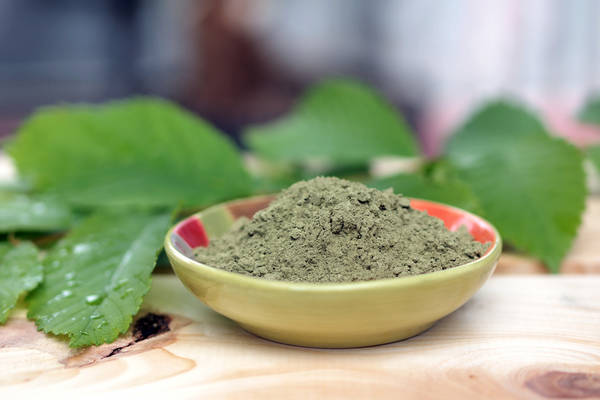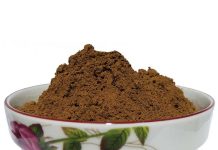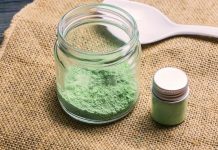The regular consumers of the ever-green, medicinal plant Mitragyna speciose, popularly known as kratom, enjoy it in different forms to attain the health benefits along with the exquisite feelings of euphoria and serenity.
As with several psychoactive substances, kratom develops tolerance, which might not be what the kratom consumers would appreciate. So for a kratom lover and a frequent user, here is a read discussing how to lower kratom tolerance.
Before moving on to the tips, the single most crucial piece of information is understanding what tolerance is.
Tolerance
The National Institute on Drug Abuse (NIDA) defines tolerance as ‘The state in which one’s body no longer responds to the original dose of a drug, requiring the person to take more to feel the original effects.’
In simpler terms, the body becomes less sensitive to kratom when you consume kratom regularly. Therefore you have to use larger doses to get the same effects that you were getting with the initial lower doses.
More and more kratom is to be consumed to satisfy the craving, then the body even adapts to that increased dose. This has a two-fold loss, one being wastage of money and the other, the more critical problem is the tendency of overdosing.
Let us first discuss some science.
How does tolerance develop?
When the specific receptors in the body get desensitized to the drug, tolerance develops. The kratom tolerance is attributable primarily to its alkaloids, mitragynine and 7-hydroxymitragynine.
When a kratom dose enters the body, alkaloids work on the brain receptors within a period of 10 to 30 minutes. Here is when the consumer feels the kratom kick. This effect, after reaching a peak, is toned down by downregulating, i.e. decreasing the number of those brain receptors to maintain balance.
Even after the kratom effects diminish, the alkaloids remain in the consumer’s body for up to 24 hours. During this time, if you consume an additional dose of kratom, you add a new load of alkaloids to a residual lot of alkaloids. That means the body is never free of alkaloids; some of the other amounts is always running through the system.
The continuous presence of alkaloids directs the brain to downregulate the receptors to maintain equilibrium. To get the receptor back in action, a more massive dose of alkaloids is required. This is called tolerance.
It is a vicious cycle. It forces you to take larger doses each time for the same desired effect, then develops tolerance, then forces the user to consume an even higher dose, and this goes on and on. This cycle might end up in a lethal overdose.
This is also true if you consume a similar kratom strain regularly, without any interruption. The persistence of a similar strain in the body leads to ‘Stagnant Strain Syndrome’, in which the person develops a tolerance to that particular strain only.
Every regular consumer of kratom should be aware of all this basic science behind tolerance to prevent getting caught in the cycle. It seems a scary roller coaster ride, but we have some good news for you!
Kratom tolerance is reversible and manageable. You have a way around your kratom tolerance problem.
How to lower your kratom tolerance?
Strain Rotation
Mix and switch!
These two words are not just words; if applied, this tip can have a powerful impact. It is advisable to change and mix the strains to prevent developing tolerance to any specific strain.
Regularly taking one type of strain can make the brain and body habitual, thus higher doses of the same strain will be required to achieve equivalent results, this is called the stagnant strain syndrome.
It’s not necessary to change the kratom tree; you can even switch between red, white and green strains of the same kratom plant to provide yourself with a variety and also lower the tolerance.
A fun way of doing it is to designate a different strain of kratom to each day of the week and jot it down on your calendars. Rotation of the types avoids tolerance.
Right dosage
Once you have found a perfect dose for you, don’t exceed it recreationally. Higher the dose, higher the chances of tolerance. After you have determined the right dose, usually 3 to 5 grams, make it a point of measuring the dosage correctly.
Using a digital scale will save you from the chances of tripping more kratom powder. Spoons may not be a reliable measure of the dose. Sizes of the spoon may vary. Even a level spoon and a heaped spoon can have a significant difference.
If for any reason you can’t get yourself a digital scale, fix the spoon. Use the same spoon every time. Scoop out the same quantity. No more, no less!
Right doses help maintain the equilibrium inside the body. Additional doses can add to the piled up alkaloids and thus develop tolerance.
Dose spacing
Though this one sounds an ineffective tip, it is one of the magic techniques to keep your brain and body from developing kratom tolerance.
Dose spacing is taking the same dose less frequently, i.e. with a larger gap between the dosages. For example, if you take 4 grams every 4 hours, space it to 4 grams every 6 hours.
Keep on adjusting the time between the doses. This doesn’t change the dosage per serving, but it definitely changes the doses per day. Dose spacing paints a bigger picture than it seems.
Moreover, you can couple this tip with tapering too. That increases the duration between each dose along with minor reductions in the doses each time.
Try and feel the difference.
Keep track of Your Kratom Intake
This is as important as the business calenders are, where we keep track of all the meetings and appointments. When you keep a record of every intake of kratom, you can save yourself from binging over kratom. So a tight check on your kratom consumption.
Use potentiators
Can you get a more potent effect of kratom without developing tolerance?
Yes, by using potentiators!
This is one of the hacks of saving yourself from the chances of developing tolerance that accompanies the higher doses. Potentiators don’t act on the same receptors as the kratom alkaloids do; therefore, they enhance the effects without developing tolerance.
Potentiators, such as magnesium are popularly used to improve the impact. Besides, minor changes, like exercising or adding any physical activity to your routine, can act as a kratom potentiator.
Abstinence
Do you remember the science we discussed above how one dose over another can pool up the kratom alkaloids within your system? If you did understand the concept, then you surely understand the reason behind the abstinence of kratom.
This would lead to a total elimination of the alkaloids from the body. A few weeks gap can give a chance to the body to metabolize and wash out the residual kratom, preparing your body for a fresher and healthier start, again! This is like hitting a reset button!
Avoid Kratom Extracts
It is best to use kratom leaves as they have the lowest potential of tolerance, especially if you intend to use kratom for a more extended period. Using more robust alternatives like kratom extracts for a prolonged period can make you abuse kratom as its easier to develop tolerance, hence the potential to overdose.
In the roller coaster ride of kratom, tolerance is just a twisted turn; it doesn’t mark the end of the ride. Recognizing, acknowledging and addressing the kratom tolerance is fundamental to keep the ride moving.
However, kratom tolerance is not to be misunderstood nor ignored. It is not unreal. It is existent, but with the correct strategy and with the tips and tricks in our guide, you can get over the tolerance phase and enjoy your kratom. Know the facts and act right!

















